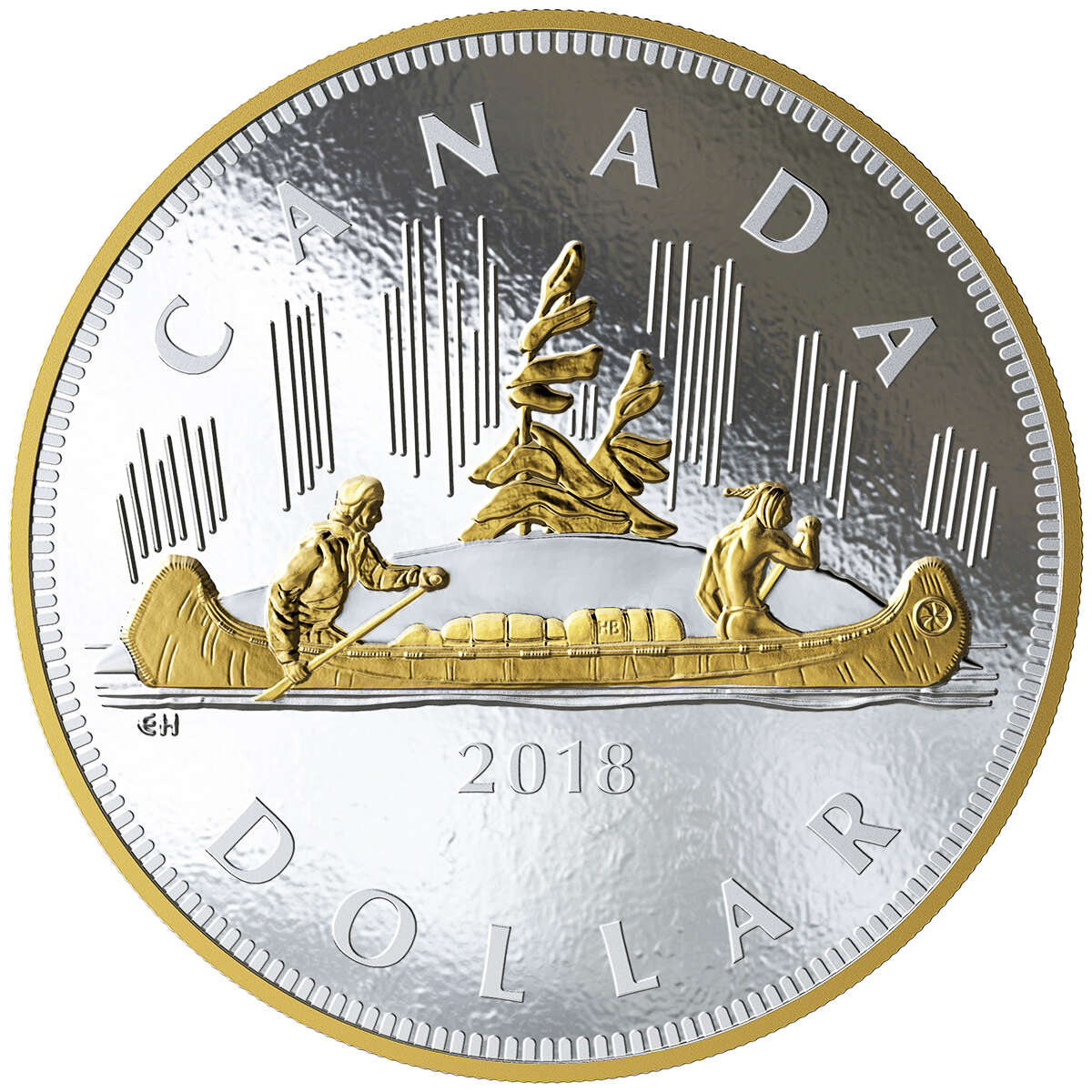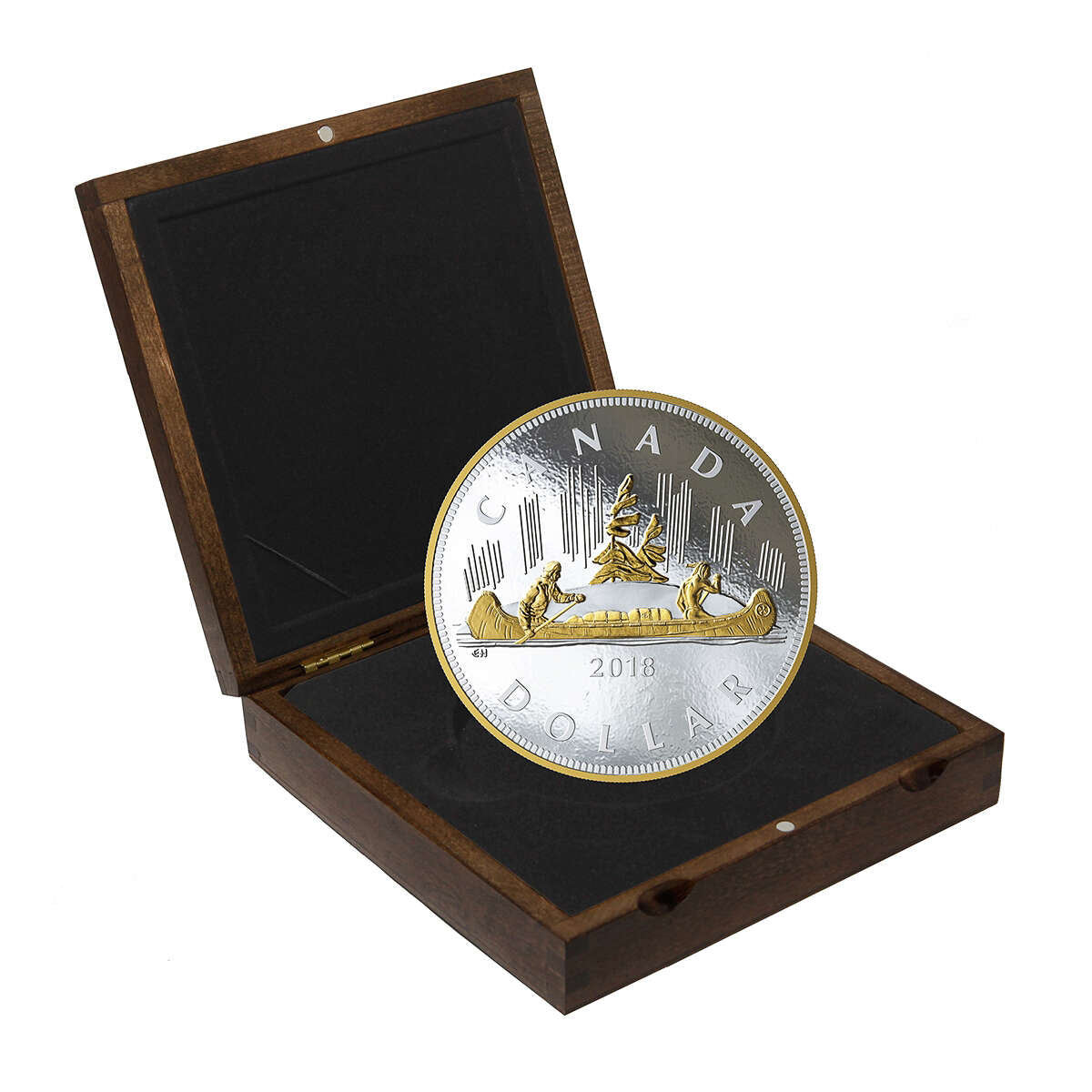Description
Wind-swept pines. A fur-laden canoe. Aurora borealis dancing overhead. More than 80 years ago, these inspiring images of Canada were combined together in a now-classic design that is reverently known as the Voyageur dollar. The history-inspired image was a fixture on Canada’s dollar coins between 1935 and 1986, and it has since appeared on several commemorative issues. But the Voyageur has never made its way onto a kilo coin—until now.
The coin is dated 2018 with a $1 denomination and weighs ONE KILOGRAM of pure silver, or just over 32 ounces. Adding to its collectability, the mintage is extremely limited to just 350 coins. As a pure silver coin issued by the Royal Canadian Mint, this item is HST/GST exempt.
The Design:
The selectively gold-plated reverse features Emanuel Hahn’s historic Voyageur design, as seen on Canadian dollar coins issued between 1935 and 1986. A canoe traverses the center of the image; between the paddling voyageur and guide are bundles of wrapped furs and provisions. Wind-swept pines rise up from an islet in the background, while stylized vertical rays represent the aurora borealis in the sky. The canoe, travelers and pines are all gold-plated. The engraved relief includes the words “CANADA”, “DOLLAR” and an amended date, “2018”. The obverse features gold plating along the rim and on the effigy of Her Majesty Queen Elizabeth II by Susanna Blunt.





